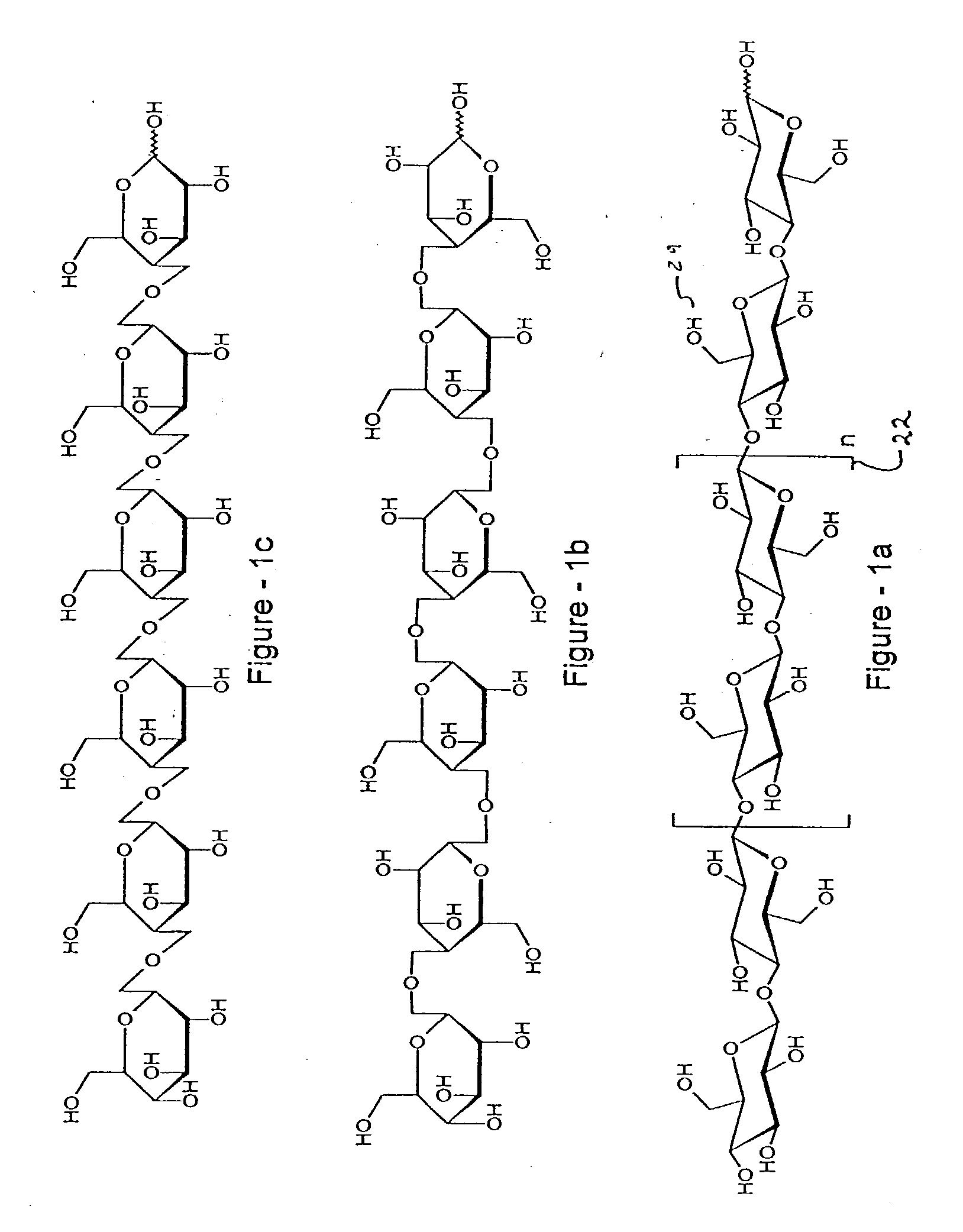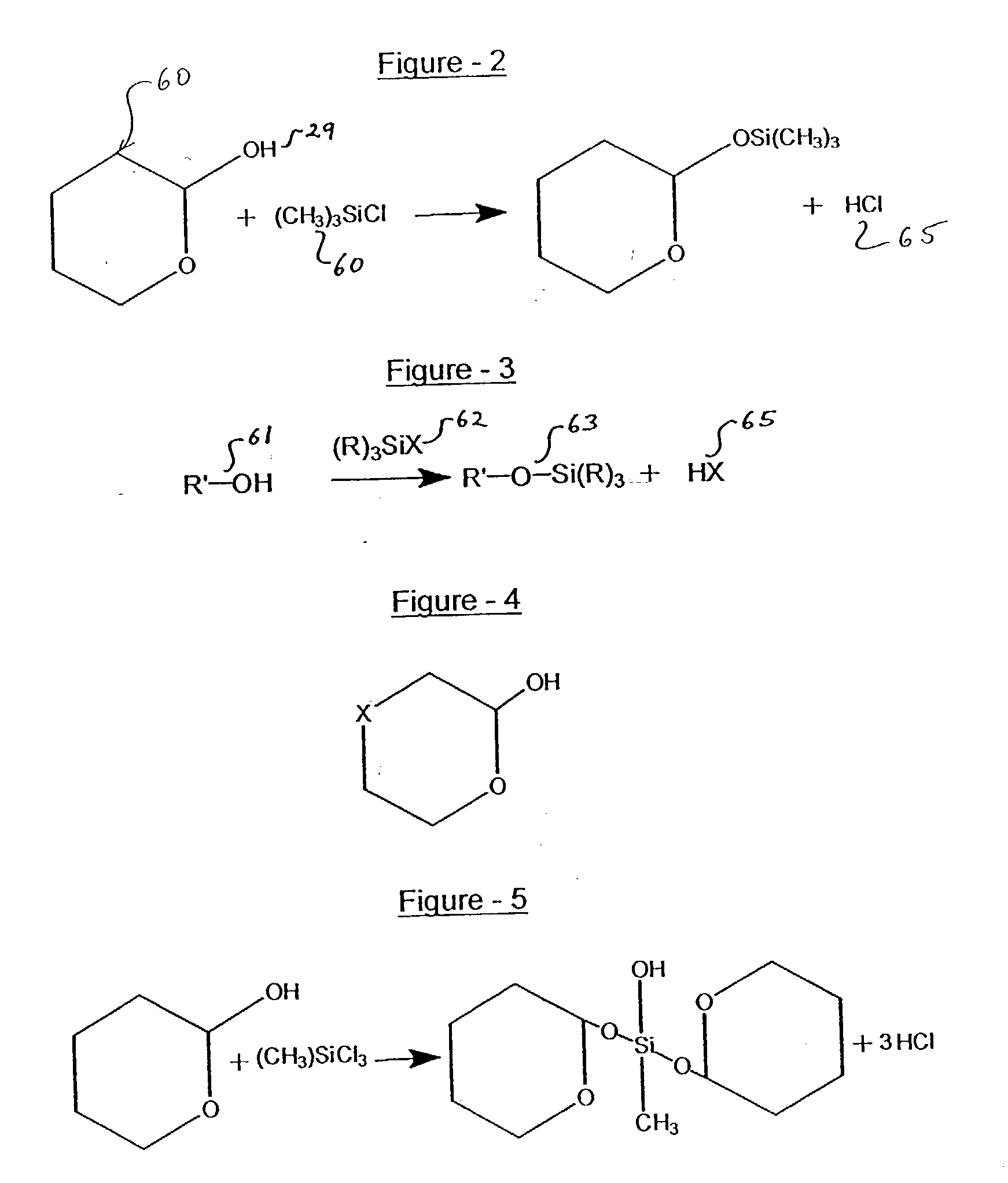Process for treating wood and products from treated wood
- Summary
- Abstract
- Description
- Claims
- Application Information
AI Technical Summary
Problems solved by technology
Method used
Image
Examples
example-2
[0319] Treatment of Wood
[0320] In a closed bell jar 200 mL of the appropriate reagents, (FRF-S; FRF-BS and FRF-MBS formula prepared as specified above) were poured and three wood pieces were placed inside such that about three fourth portions of the wood blocks were immersed in the reagents. 1.times.1" blocks of red oak and yellow pine as supplied (raw wood) were used for this study. The wood pieces were allowed to remain in this jar overnight during which time the reagents were drawn inside the wood. The temperature of the reagent solution increased by about 5 degree Centigrade during the initial exposure time of about 20 minutes by which time the penetration of the formula to the top surface of the wood was complete.
[0321] The wood pieces were allowed to air dry and periodically they were weighed to constant weight gain (about 48 hours). From this the incorporation of reagents to wood was calculated on a weight basis. The results are tabulated in the following table.
1 Wood Sample ...
example-3
[0324] Hydrophobicity
[0325] Pieces of red oak and yellow pine treated as above in example-2 and untreated wood (red oak and yellow pine) blocks were selected at random and they were completely immersed in water (distilled water, immersions accomplished by placing a glass stopper over the wood piece such that the entire wood is completely immersed in water) for varying periods of time, and the weight of water absorbed as a function of time was determined for each treatment. These comparative results obtained under identical conditions are summarized in the accompanying graphs: [for red oak and yellow pine]. The results clearly illustrates that there are striking differences in the water absorption of treated wood with the untreated control. FIG. 18A & 18B?
[0326] The results show that the apparent water absorption for red oak and yellow pine are similar although their silicon and boron contents differ significantly. Similarly FRF-S treated wood samples and FRF-BS treated wood samples ...
example-4
[0329] Retention
[0330] The water solution remaining after immersion of the respective treated samples for 24 hours performed as in Example-3 was transferred to a previously weighed beaker. First the FRF-S treated sample was examined. The solution was allowed to evaporate at room temperature. No residue was left in the beaker after complete evaporation. The beaker was weighed again. The results showed that there was no significant difference in the weight of the beaker before and after evaporation. The results showed that no silicon was leached out from the FRF-S treated wood pieces and the silicon is irreversibly bound to the wood molecules.
[0331] The FRF-BS treated sample and the FRF-MBS treated samples were similarly immersed and evaporation of the water showed minute residues, but the weights differences were insignificant indicating that both boron and silicon were retained within the wood without significant leaching out in complete agreement with expectations.
[0332] The wood p...
PUM
| Property | Measurement | Unit |
|---|---|---|
| pKa | aaaaa | aaaaa |
| pKa | aaaaa | aaaaa |
| pKa | aaaaa | aaaaa |
Abstract
Description
Claims
Application Information
 Login to View More
Login to View More - R&D
- Intellectual Property
- Life Sciences
- Materials
- Tech Scout
- Unparalleled Data Quality
- Higher Quality Content
- 60% Fewer Hallucinations
Browse by: Latest US Patents, China's latest patents, Technical Efficacy Thesaurus, Application Domain, Technology Topic, Popular Technical Reports.
© 2025 PatSnap. All rights reserved.Legal|Privacy policy|Modern Slavery Act Transparency Statement|Sitemap|About US| Contact US: help@patsnap.com



